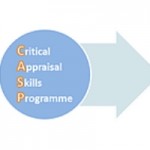P Value in Plain English
Using simple terms and examples, this blog explains what p-values mean in the context of testing hypotheses in research.
Key Concepts addressed:Details
This blog aims to explain the p-value, in simple terms. To do so, it takes the example of a world-famous basketball player losing a game of basketball to a small child. The likelihood of this happening by chance would be so small (say, less than 5%) that this unlikelihood could be considered as evidence against the fair play of the basketball star. The blog author uses this example as a way to explain what researchers do when they test hypotheses in research to either reject or accept a null hypothesis (i.e. “a statement suggesting that nothing interesting is going on, for example, that there is no difference between the observed data and what was expected, or no difference between two groups”). The blog author concludes with an example of a biased coin, which lands on heads 18 times out of 20 that it is flipped. The chance of obtaining such a result is so small, if the coin were normal. So one would have to reject the null hypothesis (that the coin is not biased), and accept that the coin is extraordinary. Read the blog
Students 4 Best Evidence (S4BE) is a growing network of students from around the world, from school age to university, who are interested in learning more about evidence-based healthcare (EBH). The network is supported by the UK Cochrane Centre. In addition to the website, the S4BE has a Facebook group and Twitter feed. For more information, read Selena Ryan-Vigs blog which introduces Students 4 Best Evidence.



